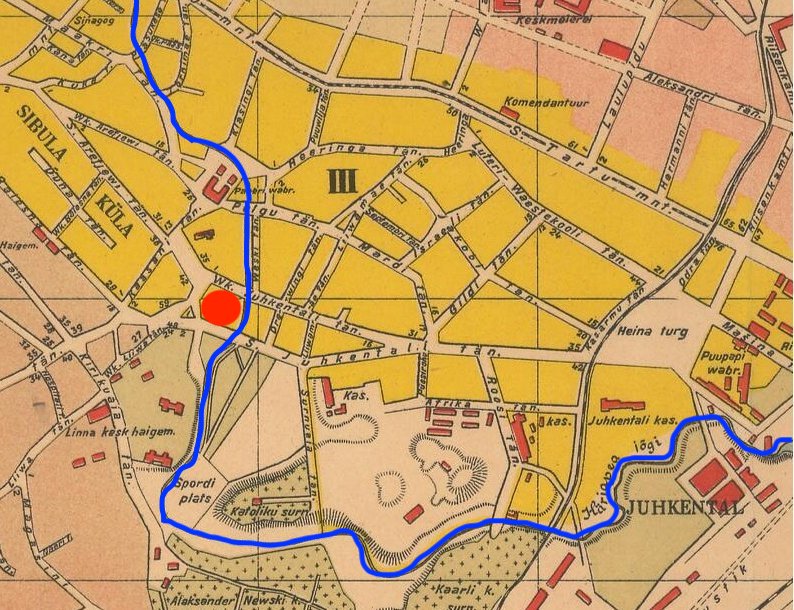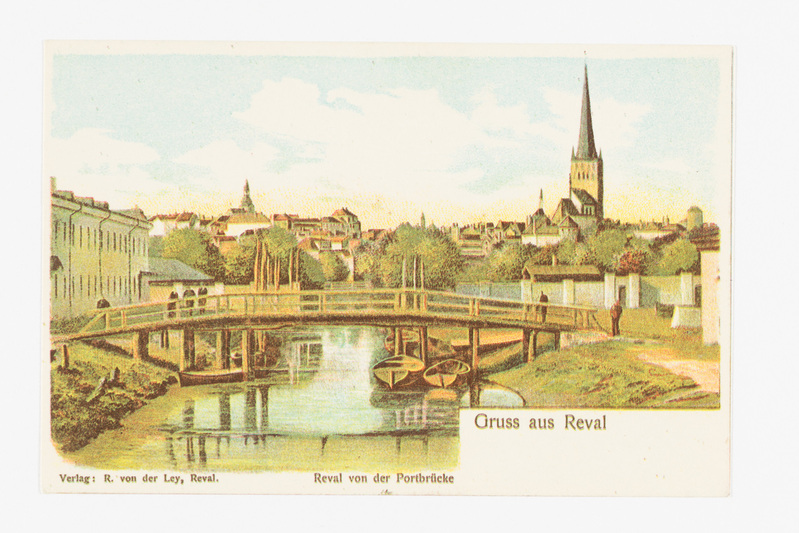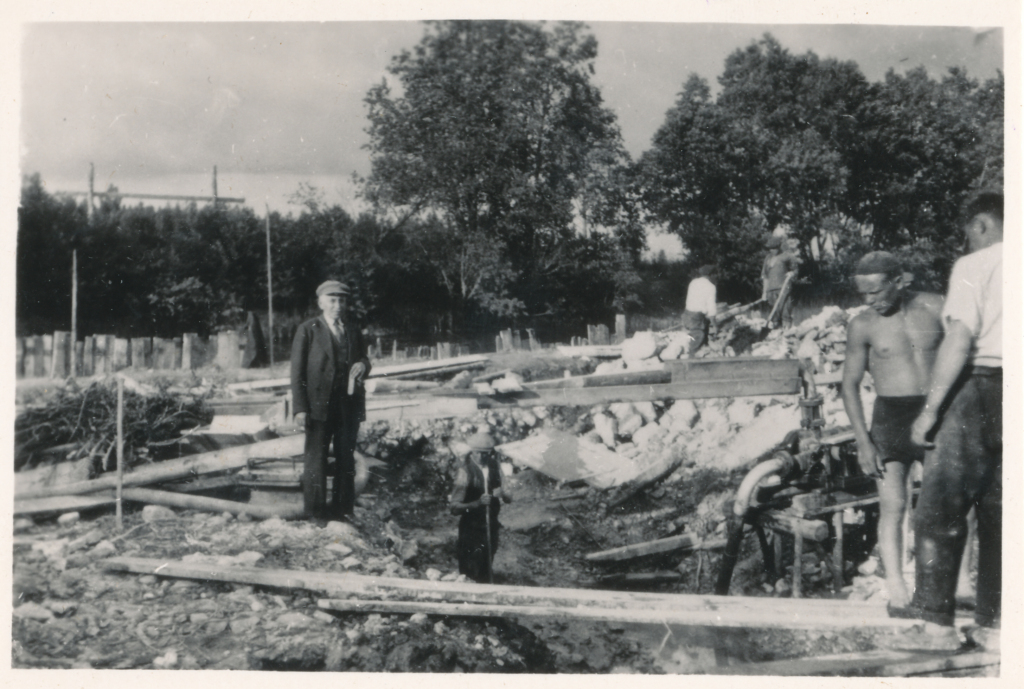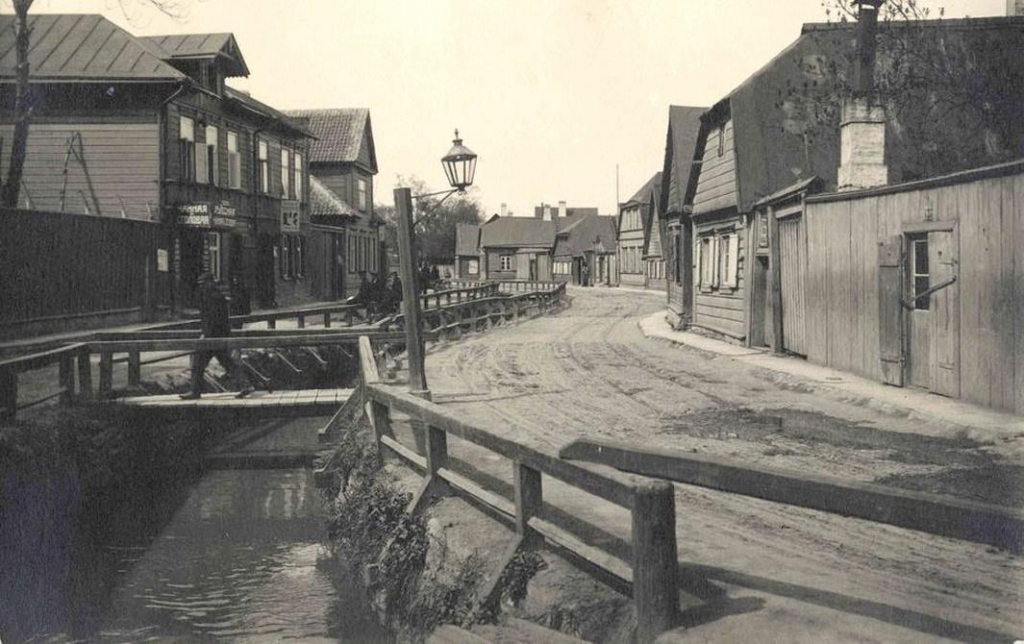Härjapea jõest ja selle veskitest
Härjapea jõgi oli sajandeid Tallinna veerikkaim vooluveekogu. Jõgi sai alguse Ülemiste järvest, lookles läbi praeguse kesklinna ja suubus Tallinna lahte vanalinnast ida pool. Tänane Arteri kvartal asub endise jõesängi ääres, kunagise Tiigiveski ja samanimelise paisjärve läheduses.
Esmakordselt kanti Härjapea jõel asunud vesiveskid linnaplaanile 17. sajandi eelviimasel kümnendil. Lisaks Tiigiveskile asus jõel veel seitse veskit: Ülemiste veski, Vase-Paberiveski, Suru-seemisnahaveski, Vaseveski, Jaaniveski, Suruveski ja Saeveski. Just nende vesiveskite ümber hakkasid hiljem kujunema linna esimesed tööstusettevõtted, nagu Fahle tselluloosi- ja paberivabrik, Johansoni paberivabrik ning Maakri naha- ja saapavabrik.
Tollal oli Härjapea jõgi veerohke ja põhjustas kevaditi üleujutusi. Aastal 1867 tõusis jõgi üle kallaste, täites ääreni veskitiigi, mis paiknes praeguse Tiigiveski pargi kohal Juhkentali tänava ääres. See veekogu aeti kinni alles aastatel 1910–1911, kasutades selleks Estonia teatri ehitusplatsilt väljakaevatud mulda. Tiik oli selleks ajaks muutunud haisvaks mülkaks.
20 sajandi alguseks oli ka Härjapea jõgi ise tugevalt reostunud. Sinna juhiti solki, tööstusjäätmeid ja muud saastet, mis tekitasid väljakannatamatut haisu. 1914. aastal kaeti jõgi laudkattega ja selle kaldad vooderdati paekiviga, kuid lehk ei kadunud. 1936. aastal suunati jõgi täielikult maa-alusesse kollektorisse, mille kavandas hüdroloog August Velner.
Tänapäeval on jõgi andnud endast märku suurvihmade ajal tekkivate üleujutustega. Endise jõe jälgi võib näha näiteks Kaitseväe peastaabi (endine sõjaväehospidali peahoone, arhitekt A. Wladowsky) ümbruses moodustuvates ajutistes tiikides. Ka Arteri kvartali välialad asuvad Härjapea jõe ürgorus, mille reljeef viitab siiani kunagisele jõesängile.




The Härjapea River and Its Mills
For centuries, the Härjapea River was the most water-rich stream in Tallinn. It originated from Lake Ülemiste, meandered through what is now the city centre and flowed into Tallinn Bay to the east of the Old Town. Today’s Arter Quarter stands on the banks of the former river, near the site of the historic Tiigiveski mill and its namesake pond.
The watermills along the Härjapea River were first marked on a city map in the late 17th century. In addition to the Tiigiveski, there were seven other mills along the river: the Ülemiste mill, the Copper-Paper mill, the Suru-seemisnaha mill (Tannery), the Copper mill, the Jaani mill, the Suru mill and the Saw mill. It was around these mills that Tallinn’s first factories began to develop, including the Fahle pulp and paper mill, the Johanson paper mill and the Maakri leather and boot factory.
At the time, the Härjapea River carried a great volume of water and caused frequent spring floods. In 1867, the river overflowed its banks, completely filling the mill pond located where Tiigiveski Park now lies, beside Juhkentali Street. The pond was finally filled in during 1910–1911, using soil excavated from the construction site of the Estonia Theatre. By then, the pond had turned into a foul-smelling swamp.
By the early 20th century, the Härjapea River itself had become heavily polluted. Sewage, industrial waste and other contaminants were discharged into it, producing an unbearable stench. In 1914, the river was covered with wooden planks and its banks reinforced with limestone, but the odour persisted. In 1936, the river was completely enclosed and diverted into an underground collector system, designed by hydrologist August Velner.
Today, the river still makes its presence known during periods of heavy rainfall, when flooding occurs. Remnants of the former river can also be observed in temporary ponds that form near the Estonian Defence Forces Headquarters (the former Military Hospital main building, designed by architect A. Wladowsky). The outdoor areas of the Arter Quarter also lie within the ancient valley carved by the Härjapea River, the contours of which remain faintly visible in the landscape.




